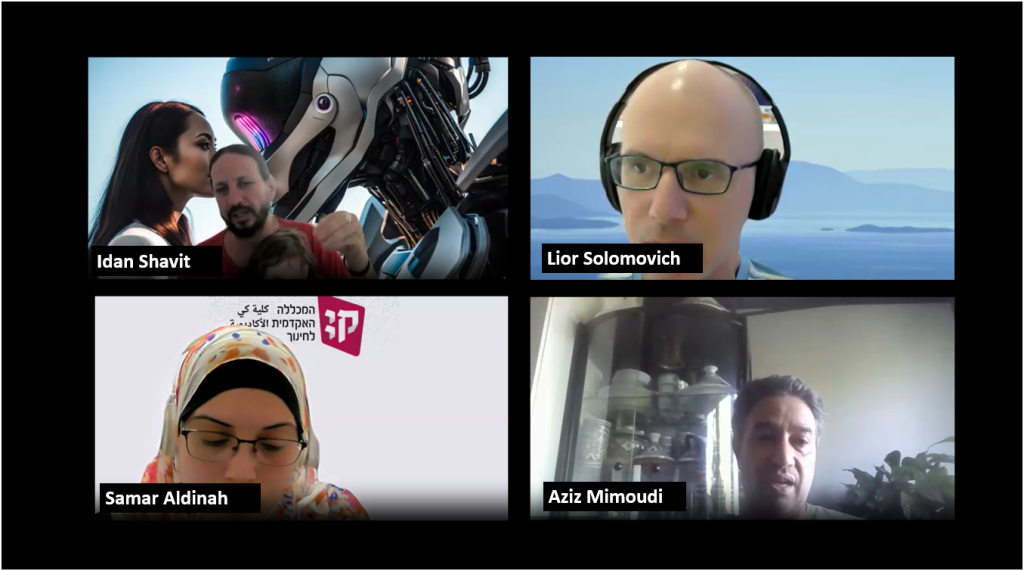
In accordance with the project’s main goal and target populations (the Bedouins in Israel and scattered populations in Morocco), partners from both countries met to discuss the challenges they face when trying to implement Generative AI in their respective disadvantaged populations, and the designing of the necessary courses for this matter.
The participants, From UN6P in Morocco and from KAYE Academic College, SAPIR College & The MOFET Institute in Israel) shared insights from their current work related to AI in education, addressing both the opportunities and challenges in integrating AI into different teaching contexts:
AI in Course Integration:
Mr. Idan Shavit (KAYE) emphasized the importance of simplifying AI usage in existing curricula to make its adoption easier for educators. He highlighted the value of demonstrating how AI can save time and improve efficiency.
Personalized Learning & Ethical Considerations:
Mr. Aziz Mimoudi (UM6P) focused on using AI to personalize learning experiences, but cautioned about ethical concerns like data privacy and algorithmic bias. He emphasized the need for teachers to be aware of the potential inequalities AI can create, even as it aims to solve them.
Engagement & Pedagogy:
Ms Samar Aldinah (KAYE) shared her experiences working with pre-service Bedouin teachers, highlighting how AI can help create personalized and engaging content, such as songs or interactive tools for kindergarten students. However, challenges remain for teachers working in areas with limited access to technology and internet.
Challenges in Rural Areas:
Mr. Lior Solomovich (KAYE) and Mr. Aziz Mimoudi (UM6P) discussed the significant technological gaps in rural areas, such as parts of Morocco, where access to basic infrastructure like internet is limited. This creates challenges in implementing AI effectively in these regions.
Ethical and Practical Use of AI:
All participants agreed on the importance of addressing bias, pedagogy, motivation, and engagement when integrating AI into education, while also considering exposure and accessibility to technology in different populations.

